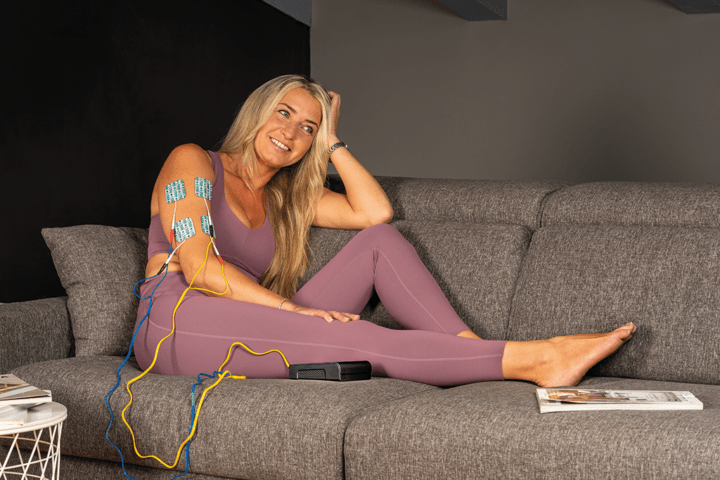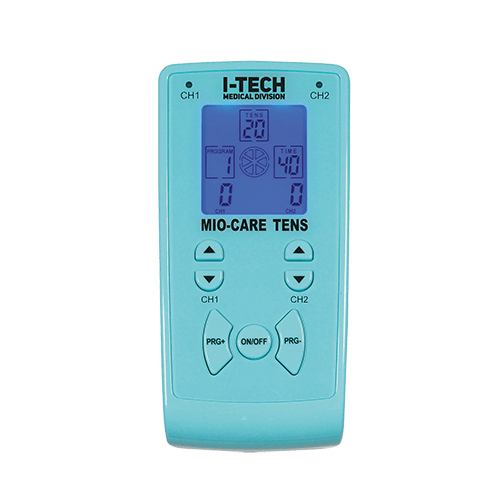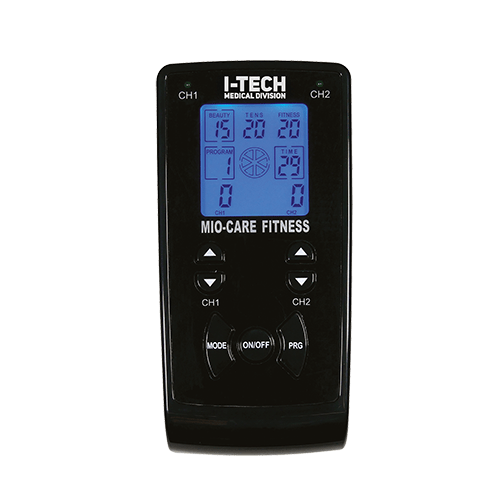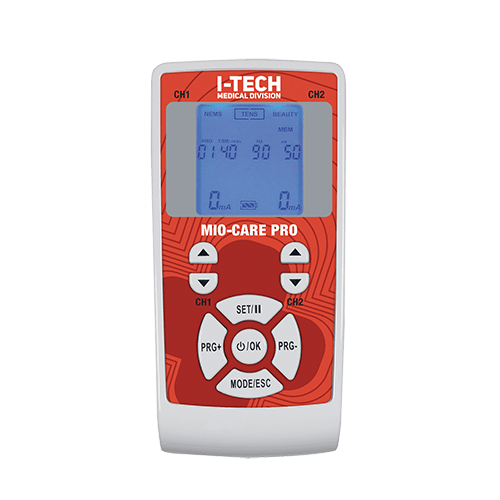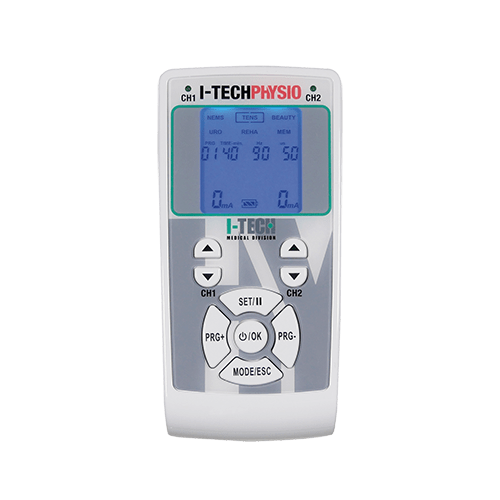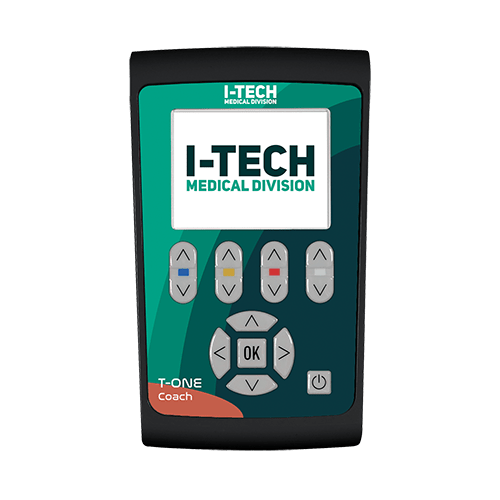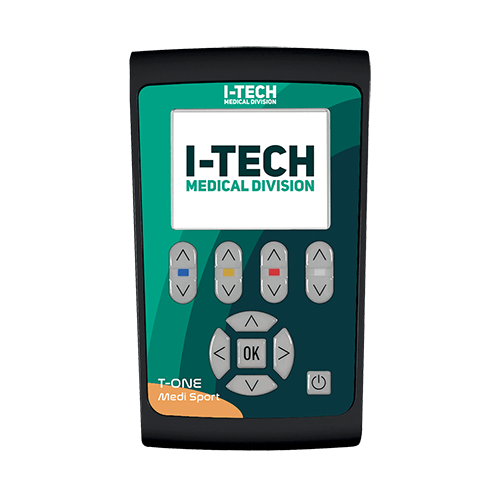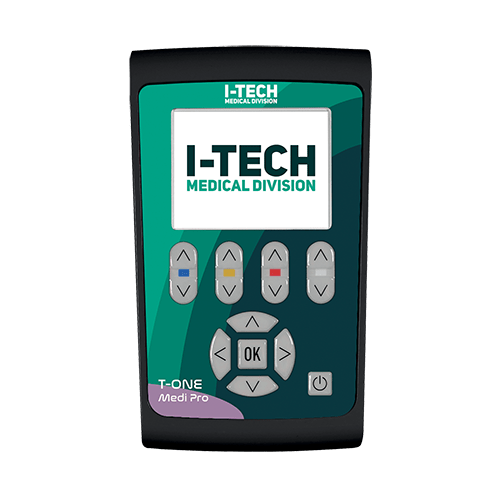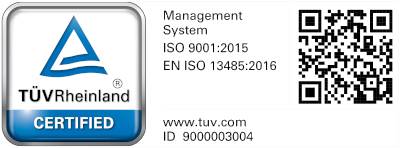- Come funziona l’elettrostimolazione?
- Come avviene una seduta di elettrostimolazione
- Perché ricorrere alla elettrostimolazione e per quali patologie è indicata?
- Apparecchi EMS o TENS: quale scegliere?
- Quali sono i benefici dell’elettrostimolazione?
- Ci sono controindicazioni o effetti collaterali?
- L’elettrostimolazione è una pratica dolorosa?
- Risultati dell’elettrostimolazione: prima e dopo
- Chi può effettuare l’elettrostimolazione?
- L’elettrostimolazione può essere usata per perdere peso o per migliorare le prestazioni sportive?
- Come scegliere l’elettrostimolatore in base alle proprie esigenze?
- Devo per forza scegliere un prodotto professionale?
- Dove acquistare i nostri elettrostimolatori?
Sicuramente la parola “elettrostimolazione” o “elettrostimolatore”, ti ricorda qualcosa, magari ti suona più familiare rispetto ad altre terapie. Infatti, è una delle tecniche terapeutiche più antiche – scoperta già nel 1791 da Luigi Galvani. Permette di ridurre la percezione del dolore e di trattare numerose patologie di natura ortopedica.
Inoltre, consente di attivare e allenare i muscoli volontari, in maniera alternativa rispetto all’attività in palestra.
Come funziona l’elettrostimolazione?
L’elettrostimolazione funziona con lo stesso meccanismo del sistema nervoso: il dispositivo controlla l’attivazione dei muscoli volontari tramite segnali elettrici.
In questo modo, grazie all’elettrostimolazione muscolare e ai diversi tipi di frequenza, potrai personalizzare l’intensità e la potenza della corrente per trattare specifiche fasce muscolari.
L’elettrostimolazione quindi – tramite gli impulsi elettrici – sostituisce l’azione volontaria del sistema nervoso. E incrementa così l’effetto allenante, antinfiammatorio o riabilitativo, sui muscoli stimolati.
Come avviene una seduta di elettrostimolazione?
La seduta di elettroterapia è semplice da effettuare, bisogna porre solo particolare attenzione al posizionamento degli elettrodi che cambia in base al programma.
In generale, se devi effettuare un trattamento per ridurre il dolore, gli elettrodi dovranno essere attaccati alla pelle, formando un quadrato con al centro la zona del dolore.
Se invece devi rafforzare un muscolo o trattarne un denervato, gli elettrodi dovranno essere posizionati agli estremi della fascia muscolare.
Infine, per un trattamento di ionoforesi, si usano le spugnette e gli elettrodi di gomma. Una volta inseriti gli elettrodi all’interno delle spugne, posizionali ai lati dell’articolazione che devi trattare.
Successivamente, aumenterai l’intensità della corrente senza mai superare la soglia del dolore.
Prima di iniziare il trattamento e di posizionare gli elettrodi, ricordati sempre di detergere la zona da trattare. In caso di peluria eccessiva, ti consigliamo di radere la zona del corpo in modo da permettere una perfetta aderenza dell’elettrodo.
La durata di una seduta di elettroterapia varia in base al programma, alla zona e alla patologia da trattare.
Per programmi di stimolazione muscolare, una seduta dura circa 20 minuti per gruppo muscolare. Ciò significa che se vuoi utilizzare un elettrostimolatore sui glutei e sugli addominali, per esempio, l’intera seduta dovrà durare complessivamente circa 40 minuti.
Mentre, se hai bisogno di trattare un dolore localizzato, i tempi variano dai 30 ai 40 minuti in base alla patologia e all’intensità di impulso. Per questo motivo ti consigliamo sempre di consultare il tuo medico per ricevere una diagnosi accurata e delle corrette indicazioni terapeutiche.

Perché ricorrere alla elettrostimolazione e per quali patologie è indicata?
Come abbiamo visto, l’elettroterapia è multifunzionale, in base alla corrente erogata dal dispositivo, permette di trattare diverse patologie e problematiche. Nello specifico, è ideale per:
- Lombalgia e sciatalgia
- Cervicalgia e cefalea miotensiva
- Distorsioni e contusioni
- Dolori generali
- Epicondilite
- Epitrocleite
- Periartrite
- Iperidrosi
- Ematomi
- Edema
- Trofismo muscolare e atrofia
- Muscolo denervato
- Incontinenza
- Pesantezza muscolare
- Accumulo di liquidi
Oltre a queste patologie, un elettrostimolatore domiciliare (così come gli elettrostimolatori professionali), può essere usato come supporto per la tua attività sportiva. Proprio in ambito sportivo, anche professionistico, questa metodica è molto diffusa ed apprezzata.
In quest’ultimo caso ricercherai prevalentemente l’aumento del tono muscolare e del recupero degli infortuni, dove il recupero della forza muscolare rappresenta uno degli obiettivi primari.
Apparecchi EMS o TENS: quale scegliere?
Il termine TENS è l’acronimo di Transcutaneous Electrical Nerve Stimulation (stimolazione elettrica nervosa transcutanea), e mira al trattamento della percezione del dolore.
Con gli apparecchi TENS potrai ridurre efficacemente il dolore. Allo stesso tempo, però, non sono adatti all’elettrostimolazione muscolare. Questa limitazione è data dal fatto che l’elettrostimolatore TENS per i dolori funziona solo come stimolatore di alcuni recettori cutanei e non può essere impostato per altri scopi. Anche se aumentando l’intensità del trattamento si riuscisse a reclutare la muscolatura, non sarebbe in grado di farlo in maniera efficace dal punto di vista dell’allenamento della muscolatura.
Il termine EMS invece è l’acronimo di Electrical Muscle Stimulation (elettrostimolazione muscolare). La finalità specifica degli elettrostimolatori EMS è quella di attivare la muscolatura volontaria, tramite impulsi elettrici specifici. A differenza degli apparecchi TENS, gli elettrostimolatori EMS ti permettono di ottenere anche effetti antalgici del tutto identici a quelli ottenibili da apparecchi TENS.
TENS e EMS non sono le uniche correnti erogate dagli elettrostimolatori. In base alla patologia che devi trattare, il tuo medico può consigliarti l’acquisto di un dispositivo differente con una o più delle seguenti correnti:
- FES (Functional Electrical Stimulation, ovvero stimolazione elettrica funzionale): è ideale per trattare problemi legati all’incontinenza maschile e femminile mediante l’uso di apposite sonde anali o vaginali.
- KOTZ: è una corrente sinusoidale che aiuta a trattare l’ipotrofia muscolare e la scoliosi.
- DENERVATO: corrente specifica, appunto, per recuperare il muscolo denervato.
- INTERFERENZIALE: è la corrente ideale per trattamenti antalgici.
- IONOFORESI: specifica per trattare l’iperidrosi;
- MICROCORRENTI: sono utilizzate invece per aiutare e stimolare la guarigione di tessuti cicatriziali e ferite.
Come abbiamo visto, gli elettrostimolatori servono per molteplici funzioni. In commercio potrai trovare sia apparecchi specifici che emettono solo una tipologia di corrente, sia dispositivi più completi che emettono due o più correnti per scopi differenti: un esempio è il nostro elettrostimolatore Mio-Care Fitness, che ti permette di trattare il dolore e rafforzare i tuoi muscoli.
Quali sono i benefici dell’elettrostimolazione?
I benefici dell’elettrostimolazione sono molteplici e sono legati sia alla tipologia di programma che vuoi usare, che alla tipologia di corrente emessa dal dispositivo.
Come visto in precedenza, a livello antalgico, puoi ottenere una riduzione delle contratture muscolari patologiche e del dolore, ad esempio lombare o cervicale. Tutto questo utilizzando programmi specifici per il rilassamento muscolare e per ridurre la percezione del dolore.
Altri vantaggi dell’allenamento con elettrostimolazione riscontrabili sono l’aumento del tono muscolare, l’aumento della forza e della resistenza muscolare e l’aumento della vascolarizzazione periferica.
Inoltre, puoi aiutare i tessuti biologici ad assimilare in modo più rapido e mirato i principi attivi del farmaco e ridurre l’iperidrosi. Invece, con i programmi per il trattamento del muscolo denervato potrai rallentare i fenomeni degenerativi della fibra muscolare, aiutando il recupero motorio del muscolo.
Infine, in base al tipo di elettrostimolatore, potrai anche effettuare trattamenti per la lipolisi e attivare la microcircolazione, drenando i liquidi in eccesso.
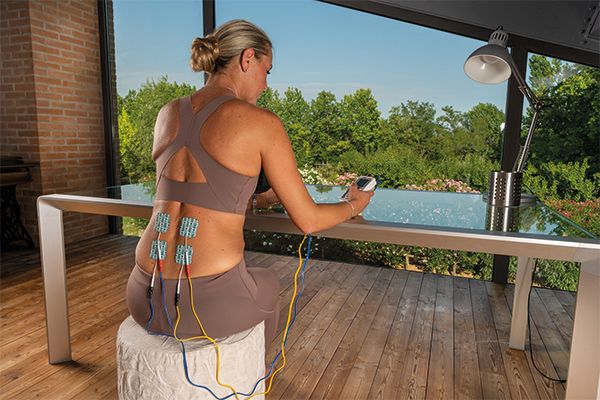
Ci sono controindicazioni o effetti collaterali?
In generale, le controindicazioni dell’elettrostimolazione sono quelle comuni a tutte le terapie strumentali, tra cui l’uso in gravidanza, in presenza di patologie infiammatorie in fase acuta ed in caso di presenza di neoplasie.
Nello specifico non devi utilizzare un dispositivo di elettroterapia:
- su lesioni cancerogene nella zona di trattamento
- su zone infette, gonfie ed infiammate
- in caso di eruzioni cutanee (flebiti, tromboflebiti, etc.)
- su ferite aperte e dermatiti
Inoltre, è vietato l’uso a:
- portatori di pacemaker
- pazienti cardiopatici
- coloro che soffrono di aritmie gravi e pazienti epilettici
- donne in stato di gravidanza
- persone ansiose
- persone con gravi malattie, tubercolosi, diabete giovanile, malattie virali (in fase acuta), micosi di ernie inguinali o addominali
- portatori di protesi magnetizzabili
Ti consigliamo di effettuare trattamenti di elettroterapia solo se è nota la causa del dolore e solo dopo aver consultato il tuo medico specialista.
Gli effetti collaterali invece sono legati prevalentemente:
- al sovrallenamento, nel caso non vengano rispettate le corrette modalità di utilizzo
alla possibilità di arrossamento cutaneo sotto gli elettrodi, nel caso si usino elettrodi deteriorati o creme prima dell’applicazione degli elettrodi.
L’elettrostimolazione è una pratica dolorosa?
Normalmente è considerata una tecnica indolore. Può capitare, se non sei abituato, di ricevere sensazioni sgradevoli durante le prime sedute se non usi correttamente il dispositivo. Ma non temere, se segui le indicazioni contenute nel manuale d’uso del dispositivo non correrai questi rischi.
Se usi per la prima volta un dispositivo di elettroterapia, ti consigliamo sempre di usare programmi che non richiedano un impegno importante, come quelli di tonificazione. Inoltre, ti consigliamo di gestire l’intensità in maniera progressiva: inizia con un’intensità di corrente bassa, che sia piacevole o quantomeno non dolorosa, per incrementare progressivamente l’intensità nelle sedute successive, senza mai superare la tua soglia di dolore.
Ogni tipologia di corrente causa una sensazione differente sulla tua pelle e sui tuoi muscoli. Nel caso dei trattamenti TENS, la sensazione che dovresti sentire è quella di un piacevole formicolio. Visivamente non vedrai nessuna contrazione del muscolo. Allo stesso modo, anche nei programmi di ionoforesi, che utilizzano una corrente continua, la sensazione deve essere la stessa.
Diversi, invece, sono i programmi per la riabilitazione e lo sport. Nei programmi EMS e FENS vedrai il muscolo contrarsi a intervalli di tempo differenti e la sensazione sarà quella di una pressione muscolare che non deve assolutamente comportare dolore. Simile è anche la sensazione interna che si ha con i programmi di INCONTINENZA, dove la corrente elettrica viene emessa dalle rispettive sonde.
Risultati dell’elettrostimolazione: prima e dopo
L’elettrostimolazione funziona, e dà risultati molto soddisfacenti in diversi ambiti, ma può essere abbastanza complesso riuscire a quantificare i risultati senza strumenti di valutazione specifici. A livello domiciliare o amatoriale si possono fare dei confronti fotografici per la valutazione del tono muscolare ogni 10 sedute di elettrostimolazione, mentre in ambito sportivo si possono effettuare dei test da campo che valutino l’incremento di forza legato all’utilizzo dell’elettrostimolazione.
Chi può effettuare l’elettrostimolazione?
L’elettrostimolazione muscolare è un trattamento per tutti, tranne per i casi inclusi nelle controindicazioni.
I nostri dispositivi domiciliari a 2 o a 4 canali sono stati progettati per essere intuitivi, sicuri e portatili. Infatti, in alcuni casi e in base alla patologia che ti è stata diagnosticata, potresti utilizzare l’elettrostimolatore anche durante l’attività fisica con il supporto del tuo fisioterapista.
Le limitazioni dell’elettrostimolazione sono correlate, fatto salvo per alcuni trattamenti specifici che richiedono ad esempio l’uso dei farmaci, alle patologie su cui si interviene o alla fase della riabilitazione in cui si interviene.
L’elettrostimolazione può essere usata per perdere peso o per migliorare le prestazioni sportive?
L’utilizzo dell’elettrostimolazione a livello sportivo può essere considerato un validissimo supporto all’allenamento tecnico, oltre che fisico.
In particolare, con un utilizzo adeguato di programmi specifici potrai incrementare tanto le caratteristiche di forza quanto quelle di resistenza muscolare.
Infatti, gli impulsi elettrici generati dell’elettrostimolatore vengono trasmessi ai muscoli attraverso il sistema nervoso periferico, interessando in maniera marginale il sistema nervoso centrale. È quindi consigliabile incrementare l’allenamento coordinativo al fine di poter sfruttare al meglio i vantaggi in termini di forza ottenuti con l’elettrostimolazione e far sì che il sistema nervoso centrale riesca a gestire in maniera ottimale questi incrementi prestativi, rendendoli fruibili durante la pratica sportiva.
Si può usare l’elettrostimolazione per dimagrire?
Ci sono due aspetti che si devono considerare. Il primo è strettamente legato al consumo energetico indotto dall’elettrostimolazione. Il secondo è legato agli effetti metabolici ed anabolici indotti dall’attività muscolare, indipendentemente da come questa sia innescata.
Dal momento che i muscoli hanno bisogno di energia per poter funzionare, l’elettrostimolazione è in grado di ottenere questo risultato, ma per perdere peso in maniera efficace l’aumento del consumo energetico deve essere massiccio.
Pertanto, da questo punto di vista è consigliabile eseguire dell’attività aerobica (anche una camminata all’aria aperta), per aumentare il consumo energetico in maniera più efficace. L’elettrostimolazione può essere utilizzata come supporto all’incremento del tono muscolare, oltre che ad aumentare il consumo energetico in alcuni distretti specifici, localizzando in maniera ottimale l’effetto del dimagrimento.
Come scegliere l’elettrostimolatore in base alle proprie esigenze?
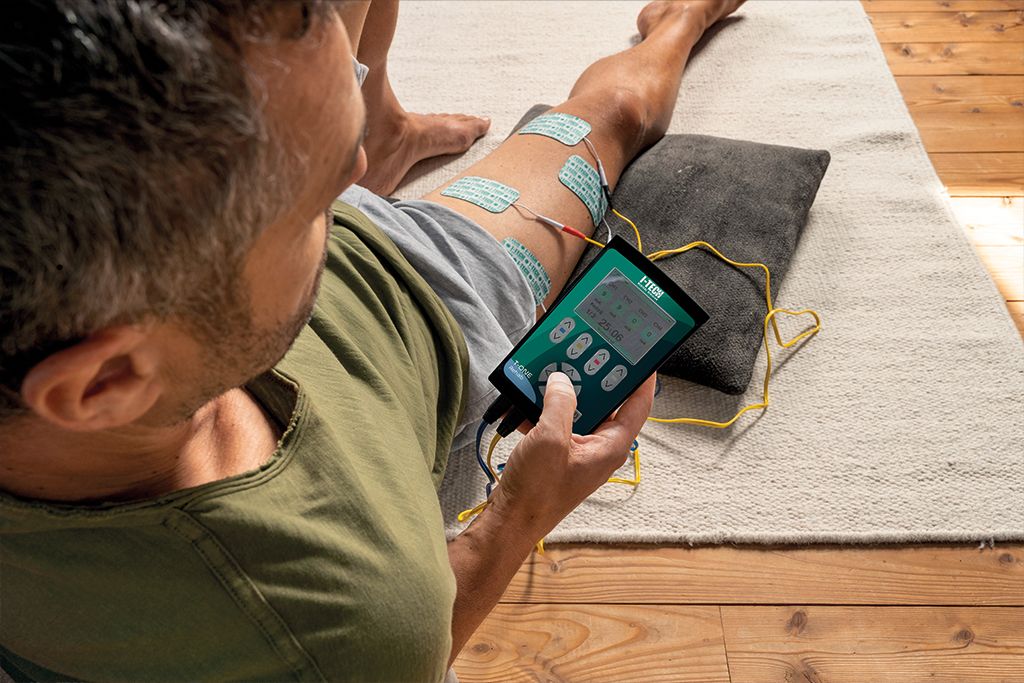
La prima regola che devi seguire per scegliere un elettrostimolatore adeguato alle tue esigenze è quello di sceglierlo in base ai programmi per trattare la patologia che ti è stata diagnosticata, assicurandoti sempre che si tratti di un dispositivo medico certificato.
Non tutti i dispositivi presenti sul mercato emettono tutte le correnti esistenti e citate nei paragrafi precedenti. Ecco perché l’aiuto del tuo medico diventa fondamentale per capire la terapia corretta da eseguire.
In secondo luogo, devi identificare quante fasce muscolari hai bisogno di trattare. Questo ti aiuterà a orientarti su un modello a 2 canali o a 4 canali. Infatti, in base al numero di canali, potrai trattare 2 o 4 fasce muscolari con lo stesso programma.
La nostra linea di dispositivi domiciliari è molto ampia e soddisfa ogni esigenza. Tra i dispositivi a 2 canali potrai scegliere:
Tutti i modelli a due canali arrivano ad un’intensità massima di 100 mA per canale.
Se cerchi, invece, un modello più completo, più performante (intensità massima di 120 mA) e in grado di trattare contemporaneamente 4 fasce muscolari, dovrai orientarti sulla linea a 4 canali.
11 modelli di dispositivi medici, progettati per ogni esigenza e tutti con certificazione a marchio CE.
Devo per forza scegliere un prodotto professionale?
Non è necessario scegliere un prodotto professionale; come visto, anche un prodotto per uso sportivo o di fitness, che sia certificato CE e medicale, è un prodotto altrettanto valido.
Le caratteristiche che diversificano un elettrostimolatore rispetto al modello professionale, è l’assenza di alcuni programmi che richiedono una formazione specifica, o di alcune caratteristiche che sono utili solo ad un’utenza particolare. Senza considerare che l’elettrostimolatore professionale ha bisogno di un professionista che ti segua durante tutto il percorso terapeutico svolto in studio.
Come accennato precedentemente, la scelta tra 2 o 4 canali è soggettiva, anche se un elettrostimolatore a 4 canali consente la stimolazione più gruppi muscolari contemporaneamente o di essere più efficaci e specifici nella stimolazione di alcuni muscoli di grosse dimensioni, tra cui il quadricipite, gli addominali e i glutei.
Gli elettrostimolatori domiciliari sono progettati e certificati proprio per essere usati autonomamente nella tranquillità di casa. Sono semplici da usare, anche da coloro meno avvezzi alla tecnologia.
Dove acquistare i nostri elettrostimolatori?
I nostri elettrostimolatori sono venduti da oltre 2000 rivenditori in tutta Italia. Li puoi trovare in sanitaria, ortopedia e anche in farmacia. Per conoscere il punto vendita più vicino a te visita la nostra pagina, se nella tua città non è presente un nostro rivenditore, contattaci telefonicamente, via e-mail o tramite i nostri canali social.
Inoltre, molti dei nostri modelli possono essere acquistati anche online.
Insomma, hai l’imbarazzo della scelta!


